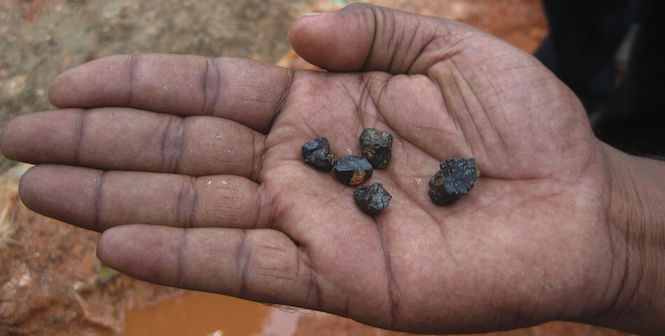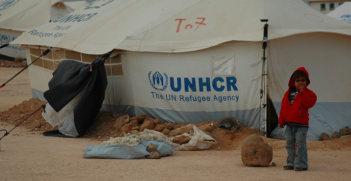Mineral Conflicts: Coltan Mining in Africa

“This is Africa” was the exasperated conclusion of Leonardo Di Caprio’s character in the 2006 film, Blood Diamond. This is a pessimistic, yet relatively accurate portrayal of all that is dysfunctional and peculiar in the continent. Not needing to explain further the very intuitive perception he shared with the pretty American journalist beside him by the bar and the Sierra Leonean bartender serving him drinks, there is a tragicomical chuckle of understanding exchanged: crazy things happen in Africa.
Often deemed Africa’s first war – and certainly its bloodiest since World War II – the strand of Congolese wars beginning in 1996 evolved into a full-scale protracted region-wide conflict that is still going strong. In the two debilitating decades since, Congo is estimated to have lost more than 6 million people with another 6 million internally displaced in neighbouring Burundi, Rwanda, Tanzania and Uganda. While the fighting continues with no end in sight, Eastern Congo today resembles a ramshackle battleground that appears to have emerged out of the legacy of the Rwandan genocide and mutated into a freakish arena of tug-of-war between mainly the Congolese government troops, Rwandan forces and the Democratic Forces for the Liberation of Rwanda, which comprises the Hutu rebels.
Similarly, the Angola, Liberia and Sierra Leone of the 1990s retreated into flurries of civil wars. They came out with almost a million dead, devastating infrastructure, lost generations of child soldiers and bleak prospects of permanent recovery.
Was this an “African” thing? Judging by the incapacitating impact of the epic triangle of warlords, black money and resource abundance, media elsewhere exploited a pro-cyclical war of words towards the so-called resource cursed unfortunate continent. Studies have singled out a variety of parameters for the sub-Saharan continent in the midst of ‘profound legitimacy crises’. These nest in the inheritance of neo-colonial infrastructure, weak or failed states and a cycle of perpetual warfare enmeshed in a rat race for valuable resources.
However, African nations have more than just this in common in this international tyranny of war: the conflict minerals that have financed these decades-long conflicts and the money that flows into their trade. The former is now well-known and documented; the latter is mostly obscured. Indeed, the chain of doom started with blood diamonds in Angola and Sierra Leone, which fuelled much of the war effort where the National Union for the Total Independence of Angola (UNITA) made generous use of its diamonds at $3.72 billion market value. The dirty finance quickly spread to bubble the ongoing conflict in the Democratic Republic of the Congo (DRC), fired this time by columbite-tantalite, more colloquially known as coltan or “that stuff used to power smart phones”. Increasing market share of consumer electronic devices and heavy speculation led to a notable price hike in 2000 where producers locked supplies of coltan out of the market, leading to scarcity and an ensuing bubble. Thus began the lengthy flow of investment into eastern DRC where the mineral was in abundance (with reserves containing more than 60% of global coltan supply according to 2008 figures) and its value less captured. This generated a dangerous economy of resource price volatility, unregulated cross-border capital flows and violent conflict in an impoverished region. The rest is bloody history.
This being said, the other side of the coin is much less scrutinised. This relates to the role of foreign direct investment (FDI) that poured into the region, responding to global demand and supply chain instability. FDI-centric mainstream literature prominently heralds the disciplining effects of international capital as the leading propagator of integrating the sub-continent into the global financial system. Intuitively, FDI is attracted to regions with strong governance and transparent institutions and is deterred by instability and conflict; and thus, is conveniently exonerated from the responsibility of deteriorating socio-economic conditions in the regions to which it flows. It remains the case that a critical analysis of market-induced capital flows in their causal relation with underdevelopment is pushed to the realm of marginal academia and reduced to a Keynesian/Marxist rebellion. Inordinate focus on the “resource curse” that engulfs sub-Saharan Africa and inherited hodgepodge of developmental failures unique to “Africa” has obstructed much-needed policy focus.
Thankfully, there are currently organisations and governments who have begun to take the debate seriously and have shifted their focus toward the nature of the global coltan trade. This primarily involves tracing the path of international capital inflows to eastern DRC in order to introduce transparency and structure into coltan production. The Enough Project took a step in the right direction and its actions and lobbying were translated into the Dodd-Frank Act of 2010, passed in the US, which introduced the mandatory disclosure of transactions conducted by US-listed extractive companies with foreign governments, in an attempt to properly monitor mineral supply chains.
The ball is currently rolling in Brussels, where the European Parliament approved the Commission’s proposal for binding regulation on conflict minerals law in May last year. The recent wave of legislature aims to make it a requirement for companies to provide a proof of origin in their supply chain and exercise due diligence in their production.
In the final stage of negotiations for passing the regulation, the two bodies along with the Council are currently debating whether to make the system of due diligence voluntary or compulsory.
However, while these measures address a considerable loophole in the problematic coltan trade in the DRC – and similar trade used to finance conflicts around the world – they are not sufficient. International capital flows travel through multiple agents who, if left unregulated or without an effective supervisory mechanism, will once again distort the much espoused nexus of capital and development. Indeed, while US and EU comprise a large part of the global demand for coltan, it is equally the case that with the growing demand for electronics, automotives and pharmaceuticals by countries such as China and India, the global coltan trade risks further entrenchment in violent conflicts in the sub-continent.
Supply chain monitoring and certification in global production processes is notoriously difficult to achieve. The failure of such enforcement perpetuates the so-called resource curse in parts of sub-Saharan Africa in the form of violent conflicts and rapidly deteriorating prospects of life. When we fail to address this monstrosity there remains only one winner: capital.
Hale Yildiz is a former intern with the AIIA National Office. This piece is inspired by her longer thesis on the same topic, which appeared in the AIIA’s most recent publication of Emerging Scholars. She is currently living in Belgium studying a Masters of European Economics and Business.





